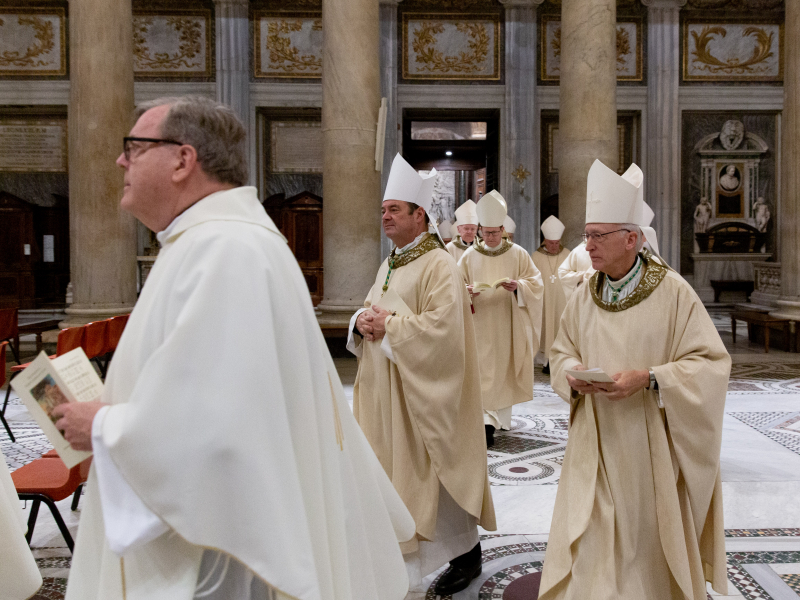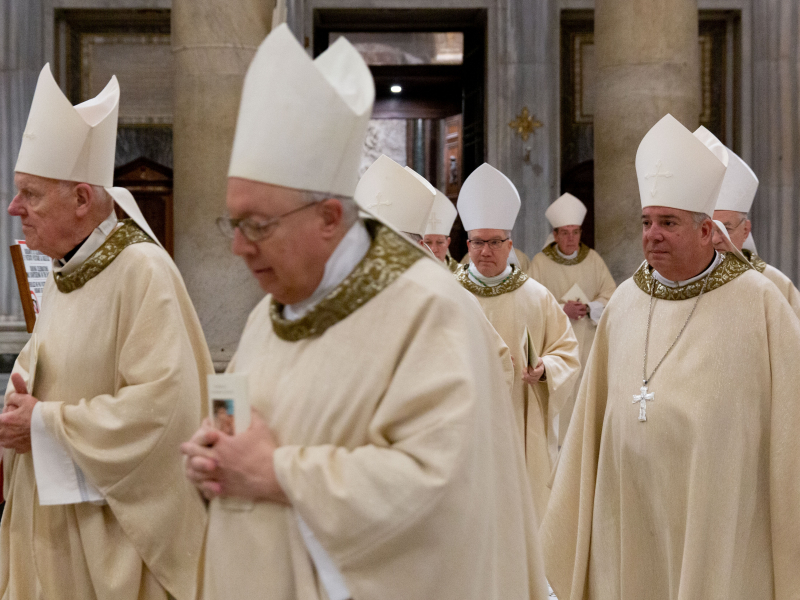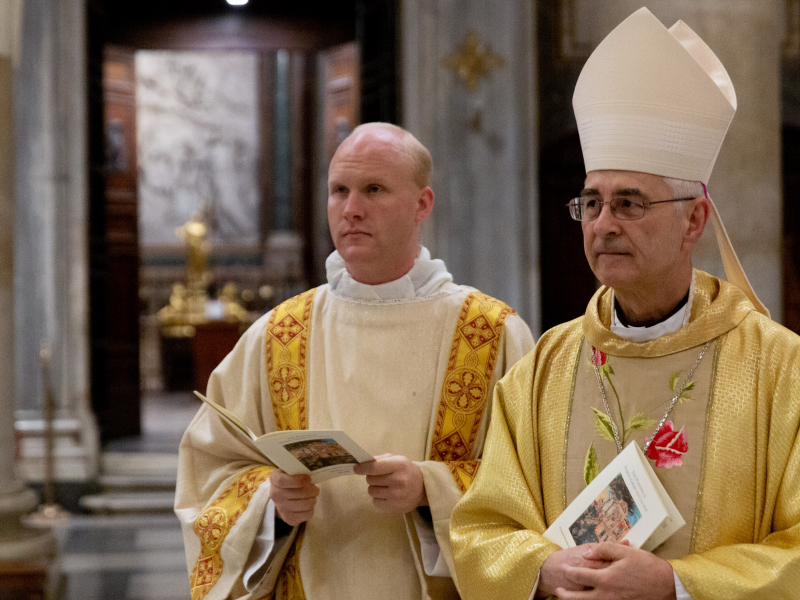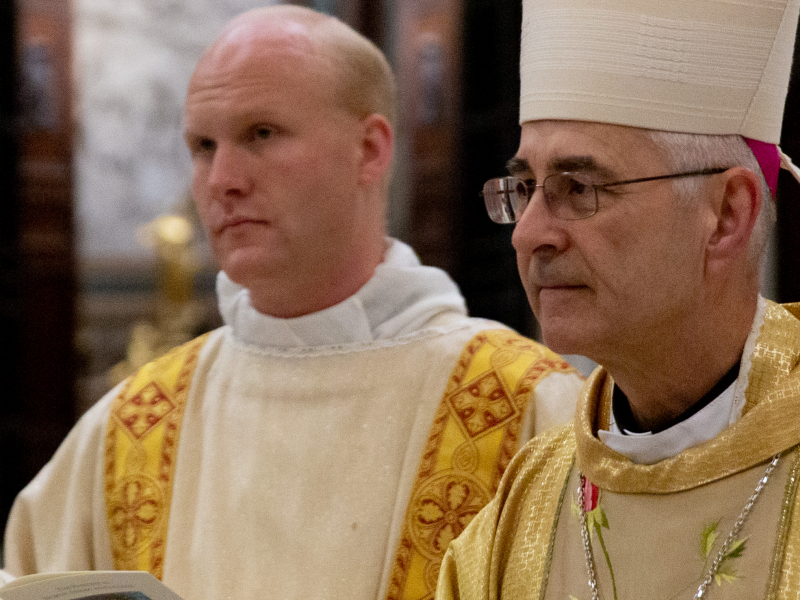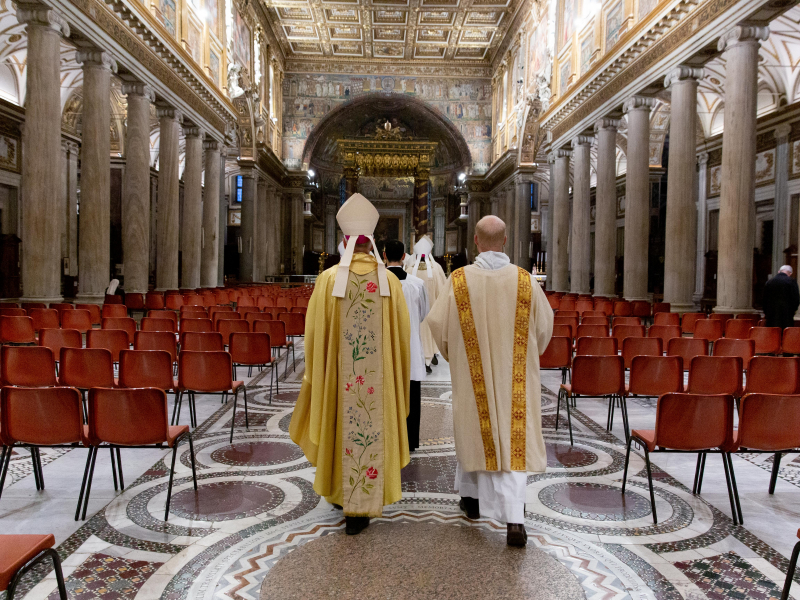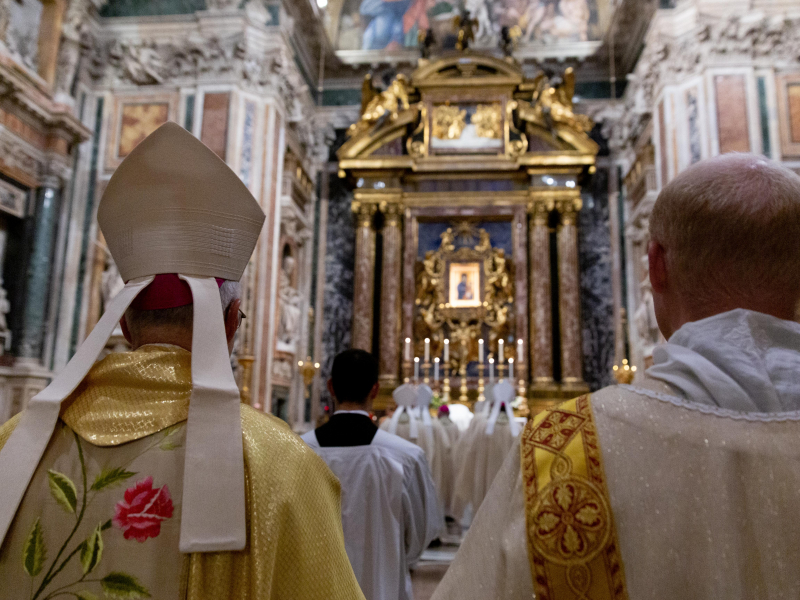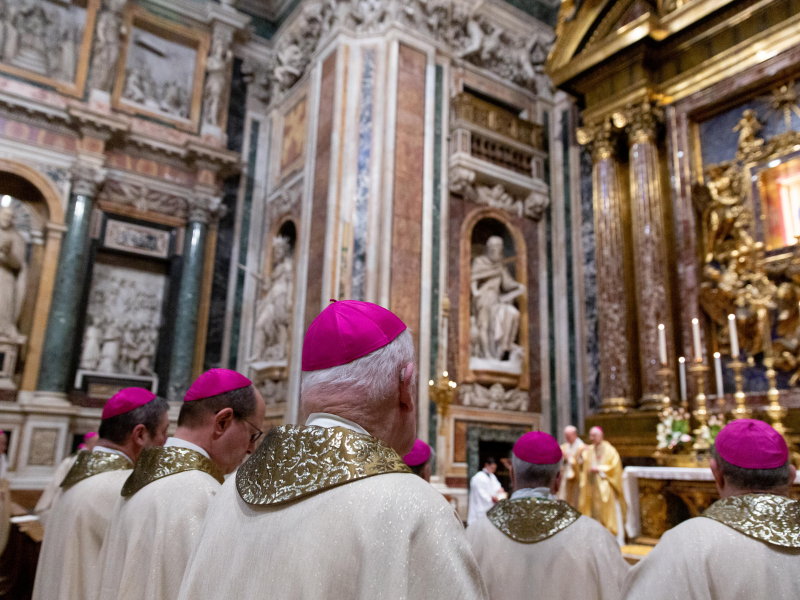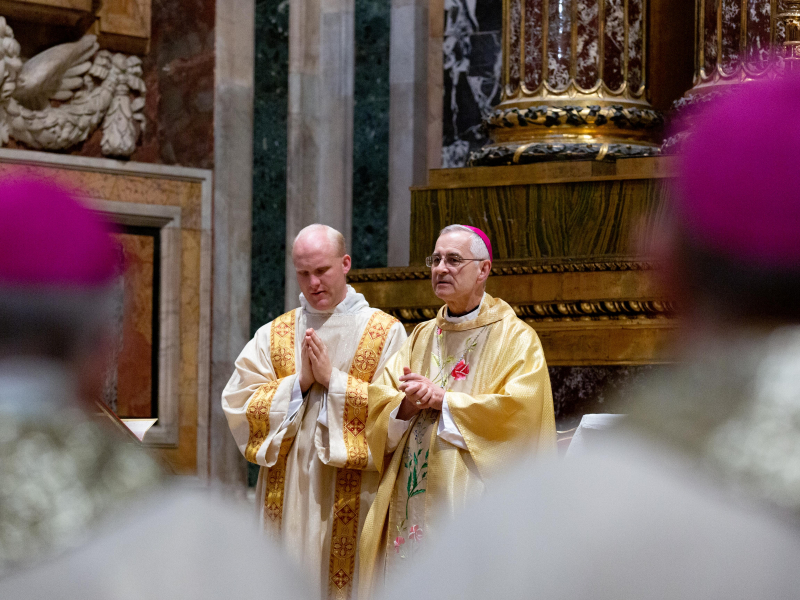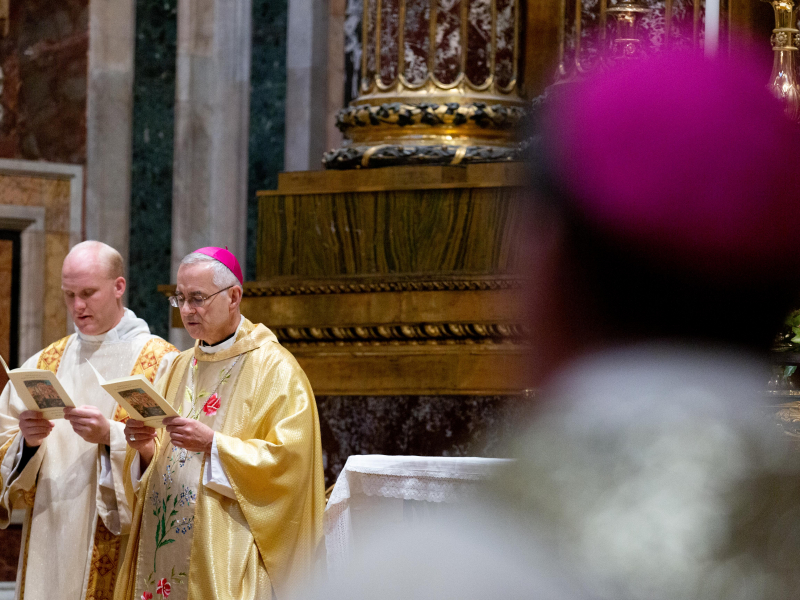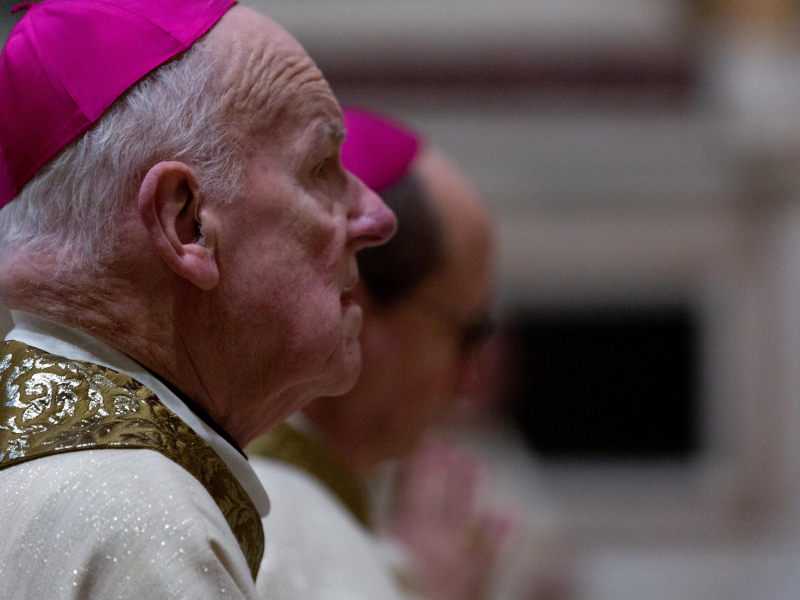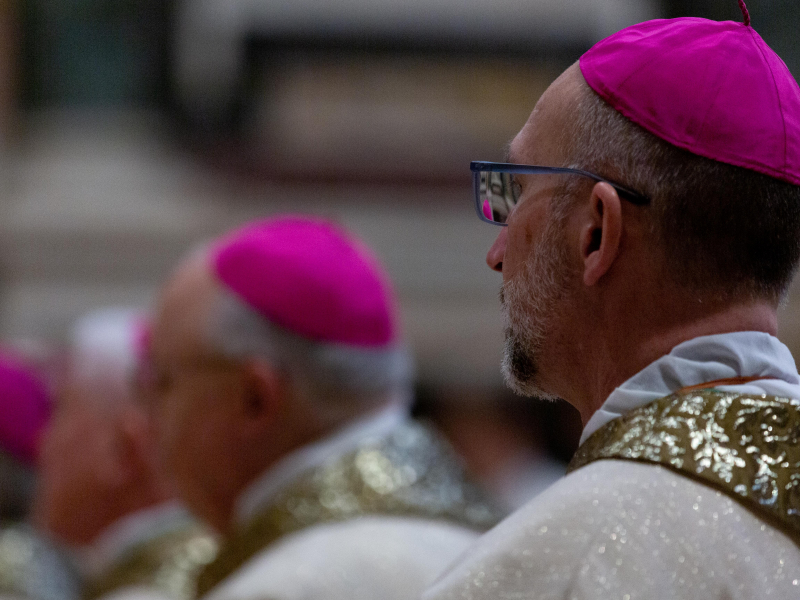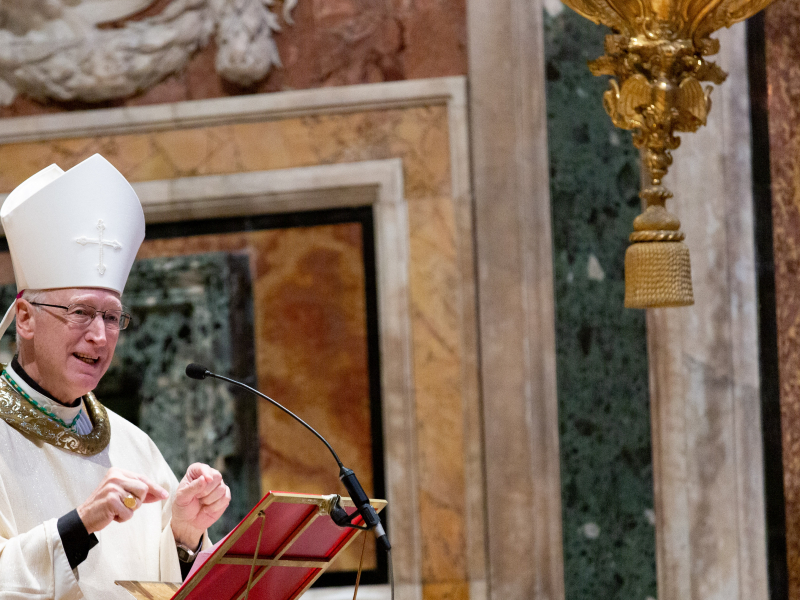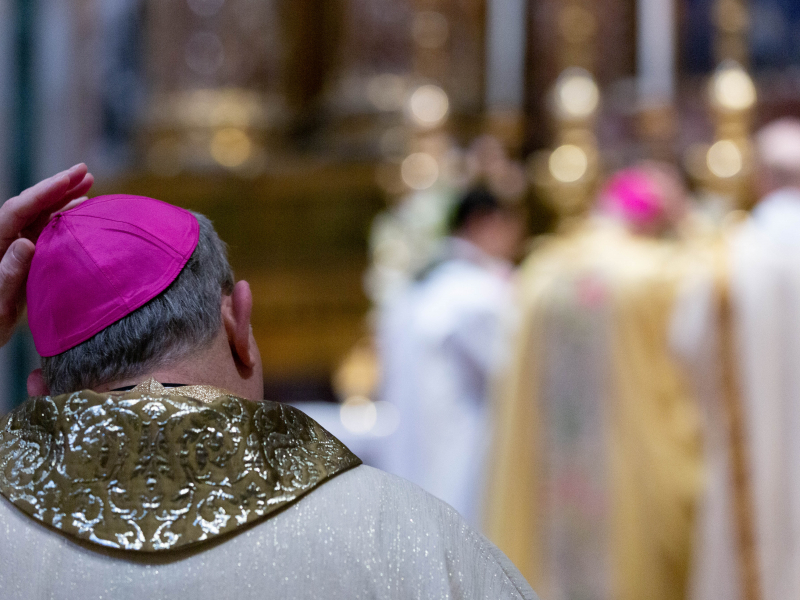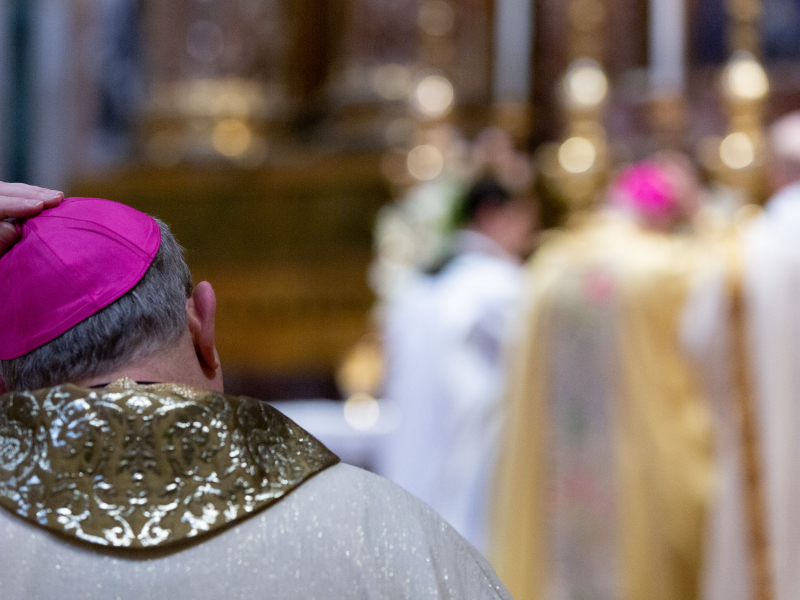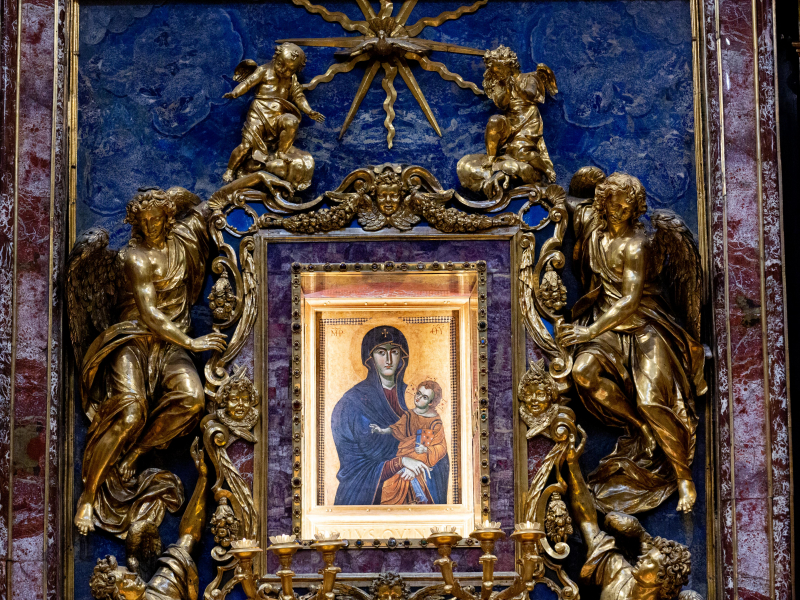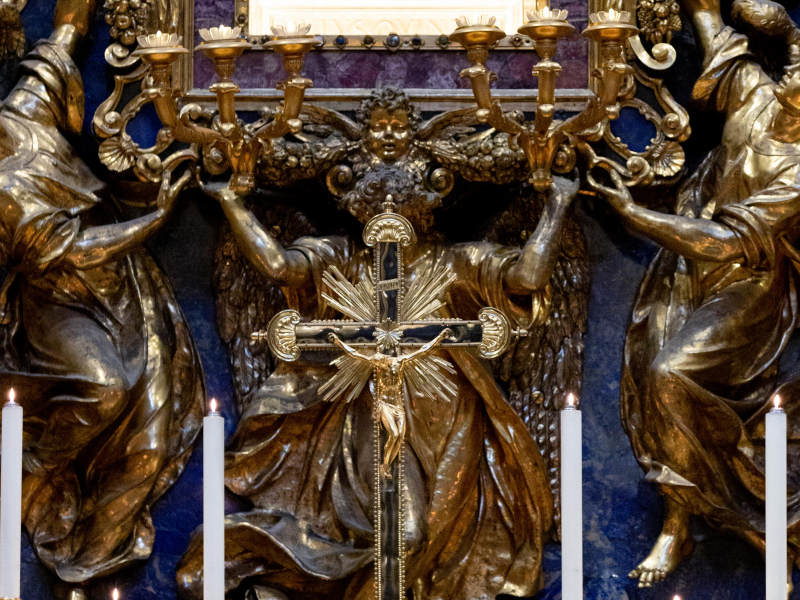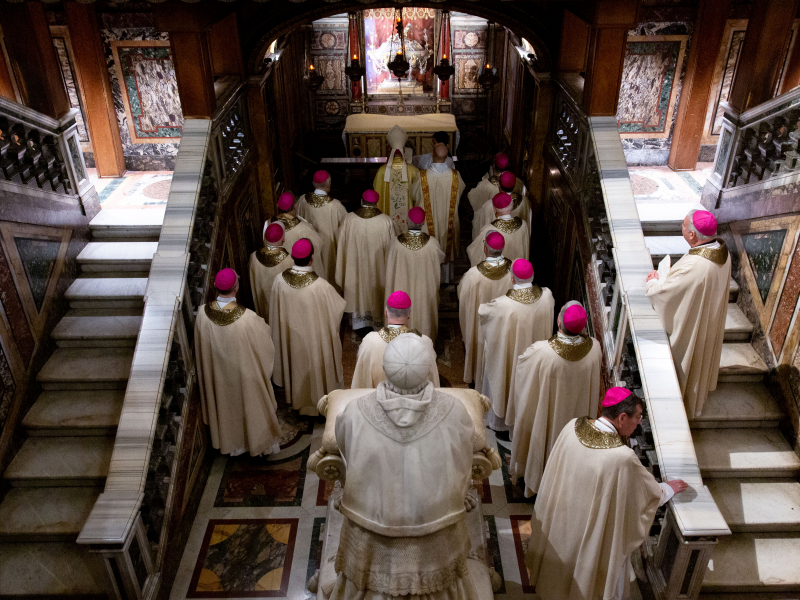
Bishop Earl Boyea of Lansing used his homily at the Basilica of Saint Mary Major in Rome, December 12, to highlight the unique role of Mary in the history of salvation.
“God sent his Son to reclaim his Kingdom from the reign of the Devil. The first and decisive attack, the sign that all would not be well with evil, took place with the Immaculate Conception,” explained Bishop Boyea.
“The Devil’s kingdom had been invaded with this act of redemptive grace – all done before the advent of the Son, but as the first fruits of his redemptive work. It was as though Mary was the point of the spear God was thrusting to overcome Satan.”
Bishop Boyea was addressing his fellow bishops from Michigan and Ohio who are presently in Rome for their visits "ad limina apostolorum" — to the threshold of the apostles — to report on the status of their dioceses, meet Pope Francis and the heads of Vatican departments and make a pilgrimage to the tombs of St. Peter and St. Paul.
Speaking upon the Feast of Our Lady of Guadalupe, Bishop Boyea identified two further occasions when Mary intervened decisively in the story of humanity’s salvation: Her “fiat” or “yes” to the Angel Gabriel during the Annunciation and her ongoing intercession as heavenly protectress of the Church.
“As the ongoing third act, Mary, like Abraham, now our mother in faith, has become the plow breaking through the ice of the cold realm which has governed creation,” said Bishop Boyea.
Today’s feast day recalls the apparitions of Mary to a poor Indian by the name of Juan Diego at Tepeyac in Mexico in December 1531. Bishop Boyea concluded by invoking his example of how Mary can cheerfully lead us towards her son, Jesus Christ.
“Let us, like her beloved son, Juan Diego, be bold and joyful in following her as we say: Oh God, I desire to do your will today. Fiat! Amen.”
Founded in the 5th century, the Basilica of Saint Mary Major is a one of Rome’s four major basilicas and is also the largest Marian church in the Eternal City. The bishops offered Holy Mass in the basilica’s Borghese Chapel beneath the painting of Mary known as “Salus Populi Romani” or “The Salvation of the Roman People”. Tradition attributes the painting to St. Luke.
Following the sacred liturgy, the bishops venerated a relic of the manger from Bethlehem in which the baby Jesus was lain which is to be found beneath the high altar of the basilica.
* Bishop Boyea’s homily is reproduced in full below:
“God sent his Son to reclaim his Kingdom from the reign of the Devil. The first and decisive attack, the sign that all would not be well with evil, took place with the Immaculate Conception, which we celebrated earlier this week. The Devil’s kingdom had been invaded with this act of redemptive grace – all done before the advent of the Son, but as the first fruits of his redemptive work. It was as though Mary was the point of the spear God was thrusting to overcome Satan.
The second act of this initial foray was Mary’s fiat, her believing without seeing, her Amen. Again, this act of grace, accomplished before the advent of the Son of Man, but as the doorway for that advent, made the breech in the wall of the evil fortress so great as to strike fear into the enemy of God.
As the ongoing third act, Mary, like Abraham, now our mother in faith, has become the plow breaking through the ice of the cold realm which has governed creation. So, for us, in our Baptism, in our Orders, and in this Eucharist, allows us to follow in Mary’s wake to overcome the Evil One, the Father of Lies.
Let us, like her beloved son, Juan Diego, be bold and joyful in following her as we say: Oh God, I desire to do your will today. Fiat! Amen.”
Photo credit: Daniel Ibáñez/CNA-EWTN.

